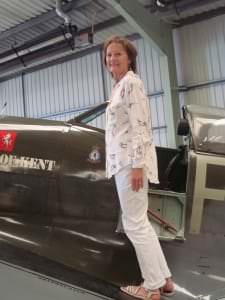October 2017

WHIRLIGIG
WHIRLIGIG is my followup to Glory. It’s daring to write publicly about work in progress, particularly when it includes Spitfires. Many people, mostly men, not necessarily of a certain age, know a lot about Spitfire aeroplanes. Some make them their lives, discovering them, renovating them, even flying them. So far I’ve only sat in one at Biggin Hill and even that was an amazing experience. My best moment recently was the discovery that a friend called Merlin was named after the famous Supermarine Rolls-Royce Merlin 12 cylinder liquid-cooled engine. My study has taken on a Boy’s Own aspect, with Spitfires pasted onto every wall and, failing Spitfires, other flying things such as birds and butterflies. One day soon I shall find a way of flying in one – a Spitfire, that is.
It all began with my decision to follow up my last novel, GLORY – about the WWI Gallipoli campaign, with a story set during WWII, using some of the same characters. But what part of WWII? My decision to write GLORY arose out of my grandfather’s life which, tragically (and pointlessly unless heroism gives it point) ended at Gallipoli, leaving behind a distraught widow and six children. But I had apparently no links with WWII nor aeroplanes indeed, except for a few brief months when my father was Minister of Aviation (another story for another time). On other hand the two youngest of my four brothers spent most of our shared childhood drawing Battle of Britain ‘dogfights’. Paul Nash did it rather better but with no more passion. Perhaps it got into my subconscious. Or could it be Biggles? Squadron Leader Flying Ace James Bigglesworth, as created by Captain W.E. Johns. I did read a lot of Biggles books in the Fifties.
Whatever the reason, the moment my research took me into the orbit of the Spitfire, I realised I had to write a story about a pilot. Not new territory, certainly, although usually written by men, but now my own. At halfway through the book, I take off most mornings with Bertie (orginally Gilbert) and fly up to 16,000 feet or higher to get above the enemy, making sure my back’s to the sun, my R/T’s working, my oxygen’s flowing and my fuel gauge at the right level. Doesn’t do to run out of fuel over the channel. I didn’t expect to write about war and death again but there is love too, and not just for the Spitfire.
